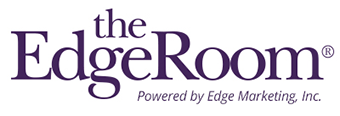https://www.theedgeroom.com/wp-content/uploads/2023/01/edge-room-updated-1.png
0
0
ekyle@rws.com
https://www.theedgeroom.com/wp-content/uploads/2023/01/edge-room-updated-1.png
ekyle@rws.com2024-01-22 09:53:342024-01-22 09:53:34Visit RWS booth #2111 to experience our AI photobooth
https://www.theedgeroom.com/wp-content/uploads/2023/01/edge-room-updated-1.png
0
0
marketing@cobblestonesoftware.com
https://www.theedgeroom.com/wp-content/uploads/2023/01/edge-room-updated-1.png
marketing@cobblestonesoftware.com2024-01-22 08:12:022024-01-22 08:12:02Discover 10 contract management system requirements your contract lifecycle management (CLM) solution needs and why.
https://www.theedgeroom.com/wp-content/uploads/2023/01/edge-room-updated-1.png
0
0
LHasen@getcaret.com
https://www.theedgeroom.com/wp-content/uploads/2023/01/edge-room-updated-1.png
LHasen@getcaret.com2024-01-20 09:50:382024-01-20 09:50:38CARET Legal Workflows Are Now Available
https://www.theedgeroom.com/wp-content/uploads/2023/01/edge-room-updated-1.png
0
0
dan.oday@goecfx.com
https://www.theedgeroom.com/wp-content/uploads/2023/01/edge-room-updated-1.png
dan.oday@goecfx.com2024-01-20 09:41:282024-01-20 09:43:47ECFX's Policy On Federal ECF Credentials & Sealed Documents
https://www.theedgeroom.com/wp-content/uploads/2023/01/edge-room-updated-1.png
0
0
jamie.fonarev@eve.legal
https://www.theedgeroom.com/wp-content/uploads/2023/01/edge-room-updated-1.png
jamie.fonarev@eve.legal2024-01-19 14:10:272024-01-19 14:11:14Frontier Law Center joins Eve at LegalWeek to discuss their AI-augmentation journey
https://www.theedgeroom.com/wp-content/uploads/2023/01/edge-room-updated-1.png
0
0
ashley.graham@priorilegal.com
https://www.theedgeroom.com/wp-content/uploads/2023/01/edge-room-updated-1.png
ashley.graham@priorilegal.com2024-01-19 13:55:262024-01-19 13:55:26Law Firm Scorecarding Explained – Best Practices and Tips for Success
https://www.theedgeroom.com/wp-content/uploads/2023/01/edge-room-updated-1.png
0
0
dan.oday@goecfx.com
https://www.theedgeroom.com/wp-content/uploads/2023/01/edge-room-updated-1.png
dan.oday@goecfx.com2024-01-19 08:33:362024-01-19 08:33:36How Software for Personal Injury Law Firms Improves Your Practice
https://www.theedgeroom.com/wp-content/uploads/2023/01/edge-room-updated-1.png
0
0
ekyle@rws.com
https://www.theedgeroom.com/wp-content/uploads/2023/01/edge-room-updated-1.png
ekyle@rws.com2024-01-18 14:28:422024-01-18 14:28:42Discover how linguistic AI expertise combined with state-of-the-art technologies can provide global organizations with fully scalable, infinitely adaptive, and secure-by-design machine translation
https://www.theedgeroom.com/wp-content/uploads/2023/01/edge-room-updated-1.png
0
0
avyas@knovos.com
https://www.theedgeroom.com/wp-content/uploads/2023/01/edge-room-updated-1.png
avyas@knovos.com2024-01-17 12:32:052024-01-17 12:34:125 Regulatory Considerations You Should Know Before Choosing a Deployment Option for your eDiscovery Platform
https://www.theedgeroom.com/wp-content/uploads/2023/01/edge-room-updated-1.png
0
0
marketing@cobblestonesoftware.com
https://www.theedgeroom.com/wp-content/uploads/2023/01/edge-room-updated-1.png
marketing@cobblestonesoftware.com2024-01-16 08:42:542024-01-16 08:42:54Learn how AI-based contract management software can help your organization maximize contract data, mitigate risk, and increase visibility




